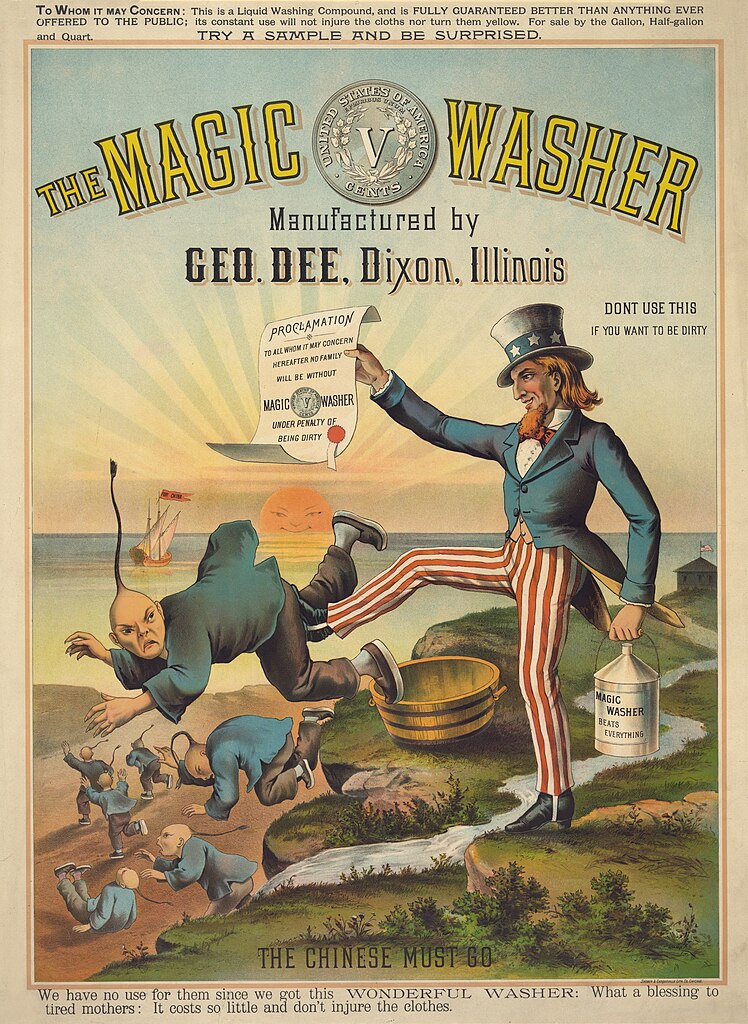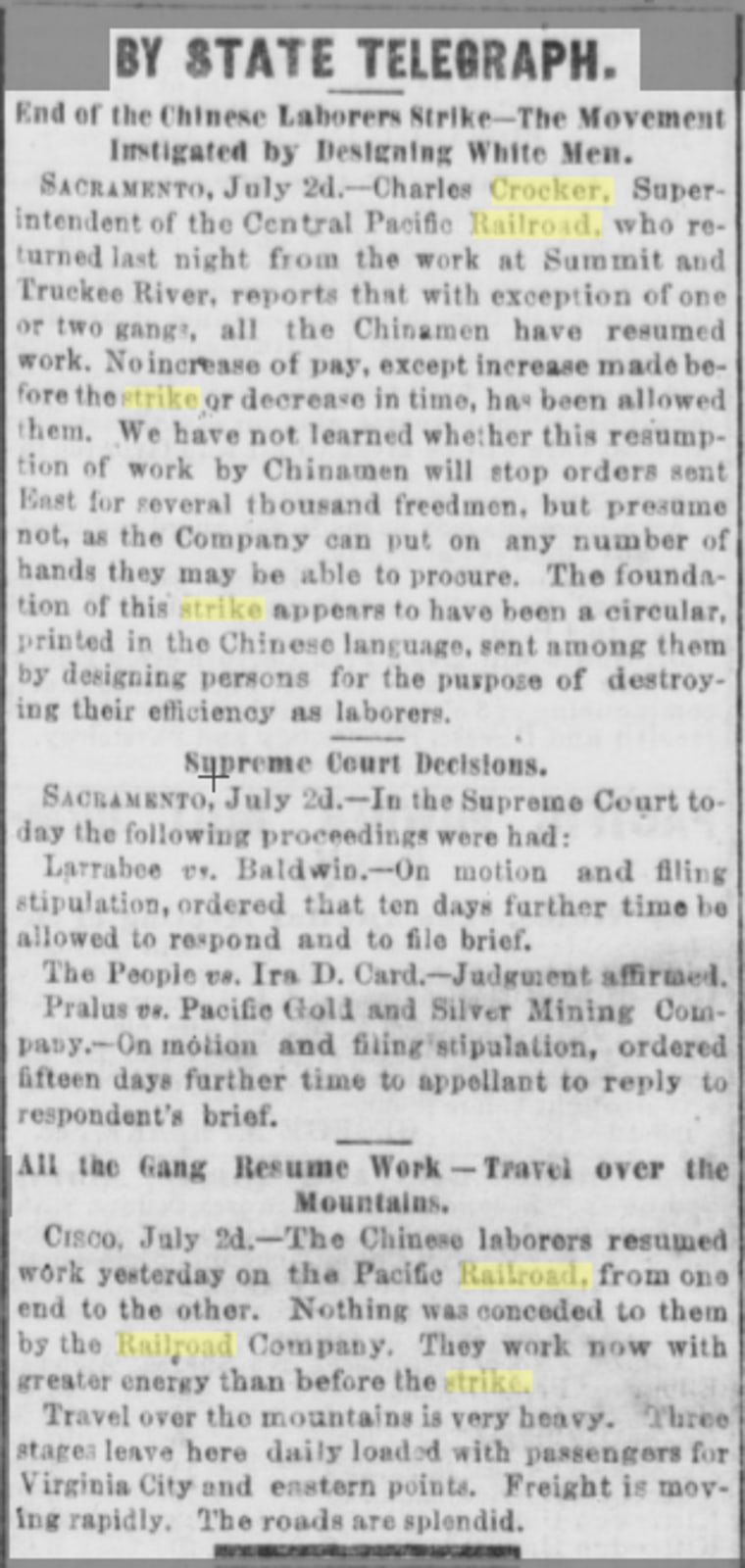Do Now Activity
Research images or political cartoons depicting anti-Chinese sentiment from the 19th century. Reflect on how these images make you feel and what they suggest about societal attitudes at the time.

“The Chinese Must Go.” United States, 1886.
Learning Objective
Discuss specific incidents and policies that targeted Chinese workers, such as lower wages compared to white workers, violent attacks, and exclusion from certain jobs.
Racism and Discrimination
Chinese workers on the Transcontinental Railroad faced significant racism and discrimination, which manifested in various forms, including wage disparity and violent attacks. Despite their critical contributions to the railroad's construction, Chinese laborers were paid significantly less than their white counterparts. While white workers earned around $30 a month plus room and board, Chinese workers were typically paid $26 a month and had to provide their own food and shelter.

“We must draw the line somewhere, you know.” United States, 1882.
Chinese workers were often targeted by white laborers who feared job competition, resulting in violence and social exclusion. They were also restricted to the most dangerous and lowest-paying jobs and denied advancement opportunities.
Legal and Social Challenges
California’s Foreign Miners’ Tax of 1850 imposed a heavy economic burden on Chinese workers. Later, the 1882 Chinese Exclusion Act barred Chinese laborers from immigrating and denied them citizenship, codifying anti-Chinese sentiment into federal law.
These laws disrupted families, curtailed economic mobility, and legitimized discrimination, contributing to the long-term marginalization of Chinese communities in the U.S.
Resistance and Resilience
Despite these injustices, Chinese workers organized strikes—most notably in 1867 when thousands demanded fair pay and working hours. Though the strike was suppressed, it marked a powerful moment of labor resistance.

An 1867 article from the Daily Alta California detailing the end of the strike.
Chinese communities formed tight-knit support networks offering mutual aid and preserving cultural identity. They also pursued legal avenues to resist discriminatory laws and fought for justice through community advocacy.
